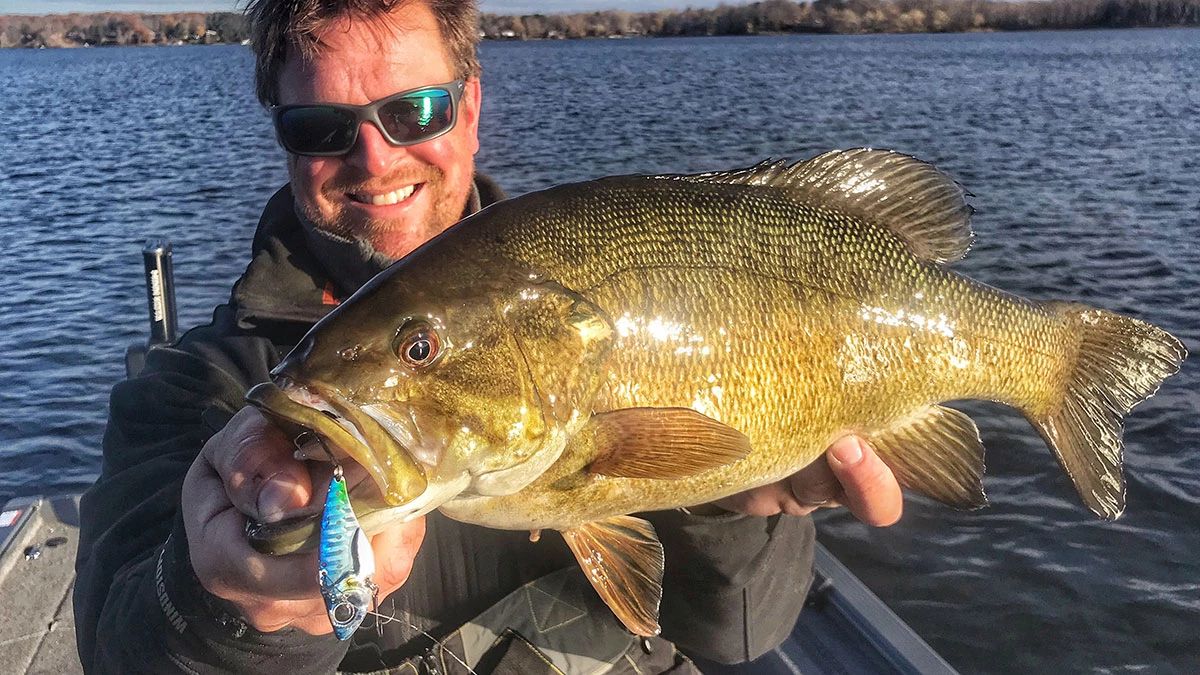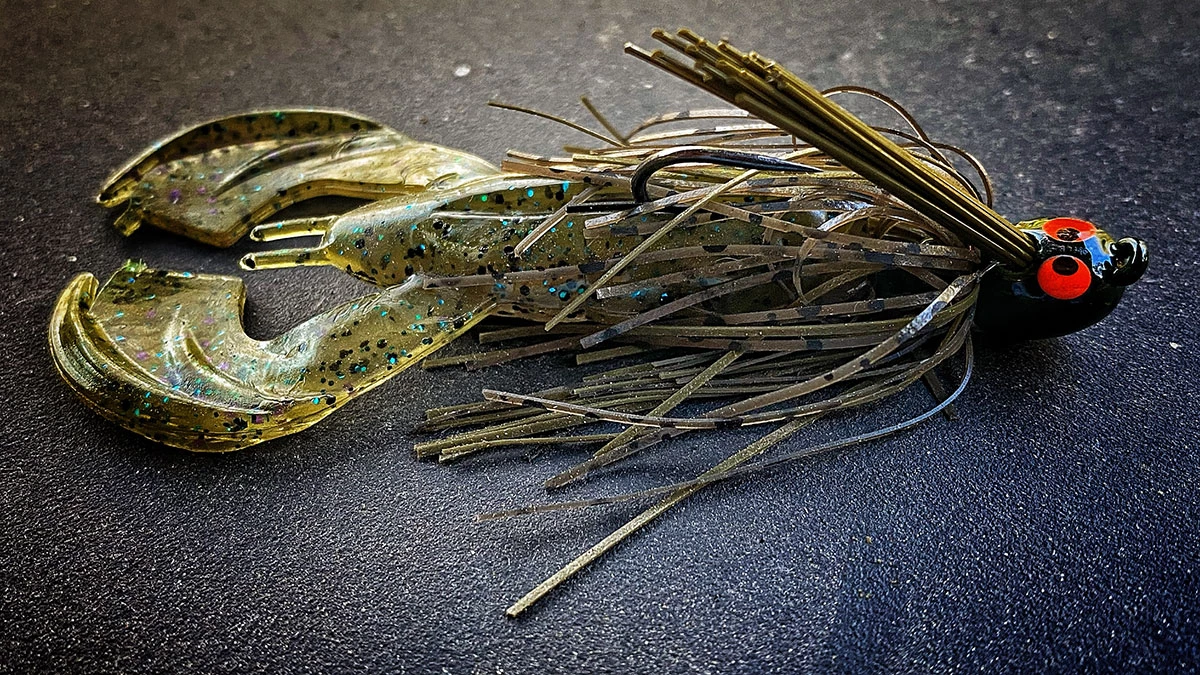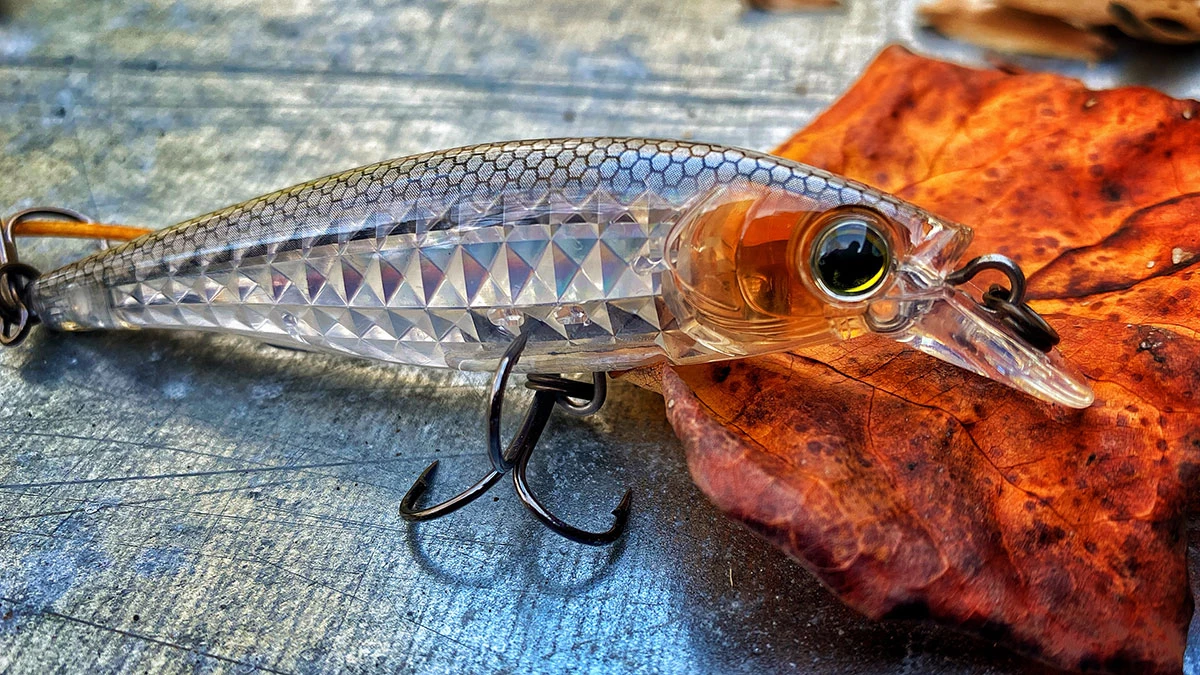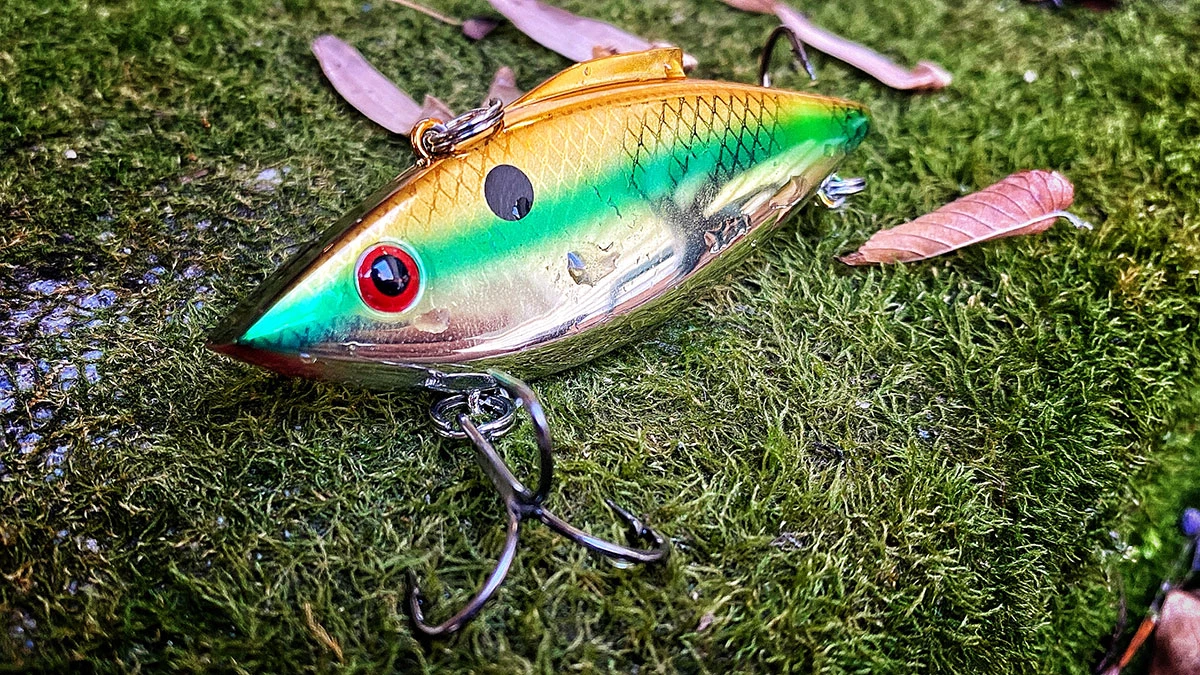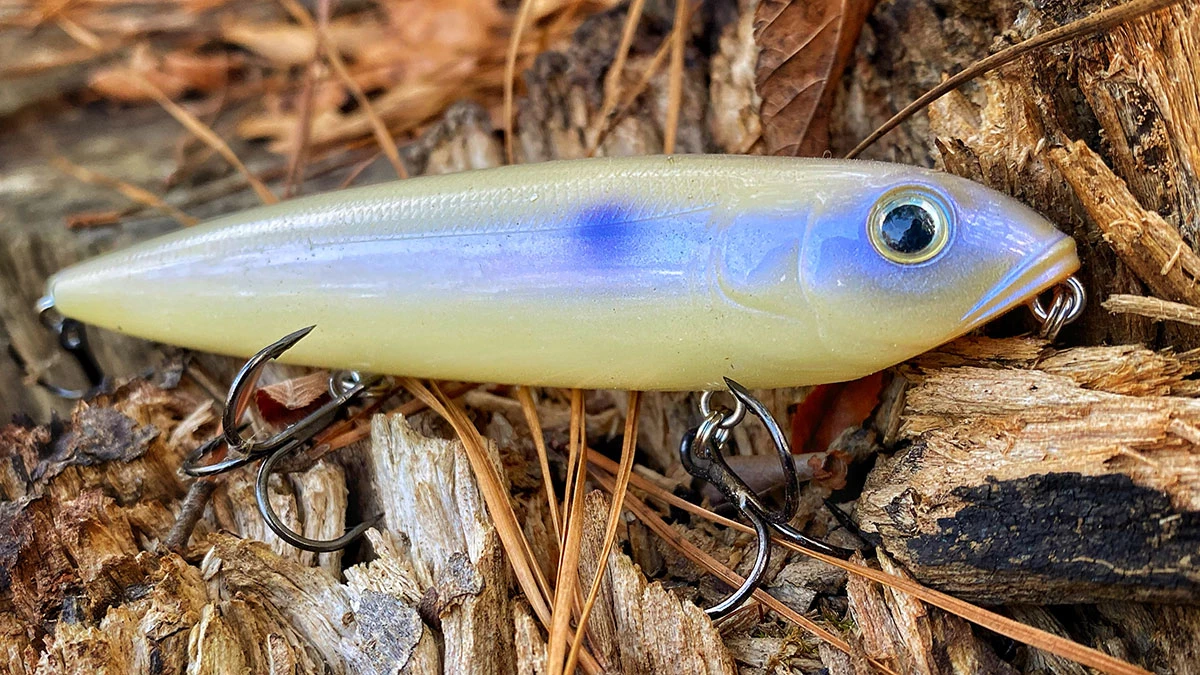Fall bass fishing can be a tricky endeavor at times but once you finally crack the code and get on an awesome bite, it can be one of the best times of year to bass fish. It’s tough to find size this time of year around much of the country but you can catch insane numbers if you land on the right group of fish. The action stays pretty hot throughout the early part of the month but regardless of your location, it tends to get a little tougher as we inch towards December.
So before we get into more details, I think it’s important to understand a few important things about November bass fishing. In the southern states, you might still see some schooling baitfish and shad near the surface for much of the month. In the rest of the country, however, you can expect both the bass and baitfish to begin heading to deeper wintering holes towards the mouths of creeks and pockets where they will likely spend the next few months.
In this month’s edition of “What We’re Throwing”, we’re going to do our best to cover all types of locations so you can make the most of your time on the water. While everyone else is out hunting, this is an incredible time to take advantage of the lack of fishing pressure. Make sure you make most of it!
Lightweight jig to capitalize on fall rate
Fall rate becomes a really big deal this time of year and it should never be overlooked. I learned this the hard way because for several Novembers, my buddies were always telling me about the awesome jig bites they’d get on. I can skip and pitch a jig as good as anyone and I’m telling you, I just couldn’t get a dang bite. I’d fish shallow cover, deep cover and everything in between and it would just about drive me crazy.
The issue, I eventually learned, was that I was using a jig that was far too heavy. I normally like to fish a 1/2-ounce jig throughout most of the year. I thought as the water cooled, I should “downsize” to a 3/8-ounce jig and that would be plenty light enough to make a difference.
News flash: It didn’t make a difference. I still wasn’t getting bites. As time went on, I learned that I needed to downsize even more.
So when your jig bite slows down this month, make an effort to change your jig size. Try a 3/16- or 1/4-ounce jig with a bulky trailer. We don’t need to turn it into rocket science when it comes to your trailer selection. I would suggest using a bulky craw-style trailer with some type of flanges on it to slow the fall on the initial presentation. If you’re someone who likes to use a more old-school chunk-style trailer, that will work excellently as well.
These lightweight jigs will be a bit tougher to accurately skip and pitch but don’t let that discourage you from trying them. It might take an afternoon to get used to it but I’m telling you, this can be a huge tool from now until the prespawn period. I bring this up because this was a huge reason I didn’t throw a lighter jig in colder weather. In the back of my mind, I felt like it needed to be lighter but with my big ol’ jig-pitching rods and heavy line, they were a pain in the butt to skip and pitch. But learn from my mistakes: stick with it and you’ll be rewarded.
Bait pictured: 1/4-ounce Z-Man CrossEyeZ Power Finesse Jig
Small jerkbait
As I’ve written about in recent months, I’ve become an enormous fan of bass fishing jerkbaits. I never liked ‘em while I was younger but I began to notice through the years that every time I tied one on, I’d catch a fish within just a few casts it seemed. So after a bunch of fish catches on ‘em, I finally got it drilled through my thick skull that they were super effective throughout much of the year.
November is no different and, in fact, I’d argue that this might be the best time of year to throw a smaller jerkbait. Standard-sized jerkbaits will certainly get you some bites as well but it seems, in my experience, that my smaller jerkbaits get a lot more bites right now than anything else.
In regards to location, I’d recommend targeting shallow cover adjacent to deep water. So if your local fishery has docks on the main lake or fallen trees near a river or creek channel swing, I’d absolutely suggest throwing a small jerkbait in these areas. They don’t come through cover very well, so it’s important to skirt the sides and front of this cover. These areas are places bass will use as a “rest stop” throughout their fall migrations. They’ll stop on these pieces of cover as they come to and leave the areas, making them great, high-percentage locations to find a willing participant.
Bait pictured: Yo-Zuri 3DR-X Series Jerkbait
Lipless crankbait… but with a little color to it
I get it… we all know lipless crankbaits are a pretty standard choice for fall bass fishing and for good reason. They catch the heck out of fish and it’s awful tough to go wrong with ‘em. But it’s important, in my opinion, to choose a color pattern that will differentiate your lure from the thousands of live baitfish surrounding it.
In much of the country, bass are finishing their annual shad ambush throughout the first-half of November. This leaves you with an interesting problem: You’re surrounded by bait, there’s plenty of bass in the area but you can’t get a bite. Why in the world would a bass want to eat your fake offering when they’re surrounded by the real thing? It would be like me asking you to eat a plastic cheeseburger when you’re surrounded by a bunch of filet mignon.
In order to avoid this very common conundrum, consider choosing a lipless crankbait that doesn’t look just like the baitfish on which the nearby bass are feeding. It’s tempting to tie on a chrome-colored lipless and go to town but if you can find a color pattern with some chartreuse or green in it, you can make your lure stand out from the rest of the baitfish and essentially prey on the predatory instincts of bass.
I like to compare it to a cat chasing a laser pointer; if you give that bass a visual cue that’s different from its surroundings, it will zero-in on your lure and track it down with impressive ferocity. So if you find yourself casting to bass chasing baitfish and you can’t buy a bite, tie on something a little gawdy that might not look like their current prey. It might seem dumb but you can have some unbelievable days on the water using this tactic.
Bait pictured: Bill Lewis Rat-L-Trap
Shaky head with a twist
November is well known for its cold fronts throughout the majority of the country; it can be beautiful one day and freezing cold and windy within just a few hours. When these weather fronts pop up this time of year, you’re going to notice a severe lack of aggressive feeding activity. This means the bass are much less likely to chase a fast-moving reaction bait due to the high barometric pressure.
This can discourage a lot of anglers but don’t let it get the best of you. Shaky heads are well known for catching a bunch of fish in tough conditions but for whatever strange reason, I’ve found that a shaky head with a speed worm-type plastic will produce a bunch of bites in brush piles when these weather fronts move in.
A lot of folks like to throw these shaky heads with dainty worms and what not and while there’s certainly a place for that, don’t overlook the more aggresive thump of these swimming-style worms. For reference, I’m primarily referring to a Zoom Ultravibe Speed Worm. I don’t know why it works so well in these situations but it does. Your color selection doesn’t need to be crazy. I like some variance of green pumpkin or watermelon red and I normally keep it that simple. There must be something about the extra “thump” these worm tails emit as you twitch and lift them through cover that get the attention of nearby bass.
When it gets super tough, I like to target the mouths of creeks and short pockets by looking for rod holders on the fronts of boat docks. The folks who own these docks will often sink brush within a cast length of them and as we mentioned earlier, the adjacent deep water will make those big bass want to live nearby. The bulkiness of these particular worms also helps you cast you shaky heads a lot easier, which turns it into a more power-fishing technique. Instead of using lightweight spinning tackle, you can use a 7-foot, 6-inch medium heavy-action fishing rod with 17-pound test. This will allow you to wrestle big fish out of the thick brush piles with ease.
Bait pictured: WOO! Tungsten Shakey Head
Blade bait towards the end of the month
As the water temperatures creep towards the low 50-degree range, it’s imperative that you keep some type of blade bait tied on at all times. A lot of folks don’t fish with these but as the fish begin to vacate the backs of creeks and move towards their deeper winter haunts, they’ll often stop at the first deep water towards the mouths of these creeks. So if you can find a creek channel in front of a pocket or small creek, you can find fish there by the hundreds. Not only will you find bass but you’ll also find a bunch of crappie and white bass as well.
And guess what? They’ll all eat a blade bait when you drop it in front of their face. Position your boat over top of them and as long as they’re deeper than 20 feet or so, your boat shouldn’t spook them. You can use your sonar and when you start seeing those spaghetti lines showing up on your screen, just drop your blade bait down to them. Once your blade bait reaches the fish, sharp, upward twitches of your rod tip will often entice bites. It’s important to let the lure fall on slack line to maintain a natural action, so when you see your slack line twitch or pop on the fall, reel down and set the hook.
It’s also worth noting that this technique will also be effective throughout the entire winter. So if it’s cold outside and the fishing gets tough, look for these deep winter haunts, drop a blade bait on ‘em and hold on tight. You can sometimes stay in one spot all afternoon and catch fish on nearly every drop.
Bait pictured: Binsky Vibrating Blade Bait
IF YOU’RE LUCKY: A big walking topwater lure
I had to throw this one in here just in case you get lucky and run across some schooling fish on the surface. It’s important to understand that you might not find this situation very often this time of year but if you do, you can catch some absolute giants. Especially in the south, you can sometimes find some late-November schoolers situated around isolated cover. There’s not always a rhyme or reason behind it but if you’re fishing along and happen to see some surface disturbance, it’s always a great idea to have one of these walking topwaters rigged and ready to cast at a moment’s notice.
You don’t need to work these lures aggressively, either. Most times in November, very subtle and slight downward twitches of your rod tip will be plenty to trigger some explosive bites. Again, this isn’t going to be something you pick up every day this time of year, especially for our northern friends. But if they start acting a fool and feeding near the surface, you can get right in a New York minute with these kinds of topwater lures.
Bait pictured: Strike King Sexy Dawg


